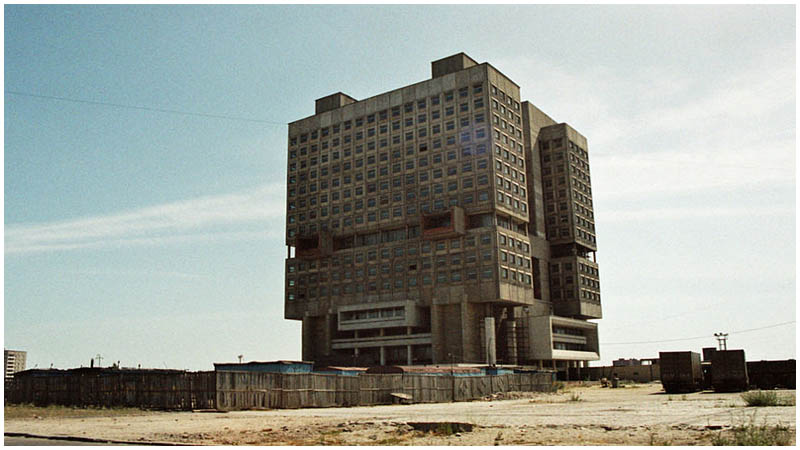Standing on the Baltic coast between Lithuania and Poland is Kaliningrad Oblast. This enclave of the Russian Federation, formally known as Königsberg, was once home to the splendid Königsberg Castle.
For centuries this imposing castle held its place overlooking the River Pregel. Its end came during the Second World War when Königsberg was still German territory — the castle was severely damaged by Allied bombing missions in 1944, and during the Battle of Königsberg in 1945. The victorious Red Army expelled the German population and Königsberg, renamed Kallingrad in 1946, was incorporated into the U.S.S.R.
After taking control over this region, as part of the redevelopment of the area and despite protests, the then-leader of the Soviet Union, Leonid Brezhnev, ordered what was left of the fortification to be destroyed.
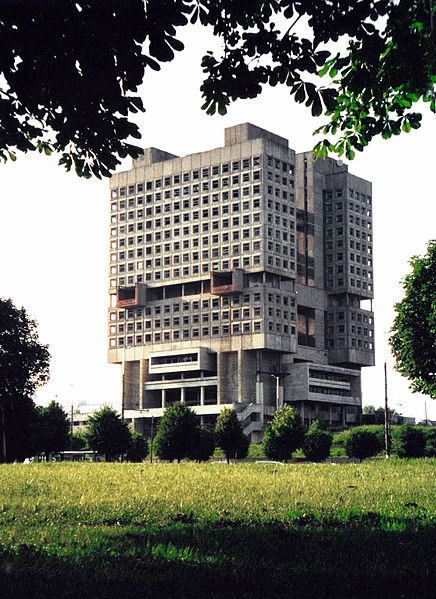
And in 1969 this “magnificent palace,” as the Encyclopedia Britannica described it, was gone. What followed next were a number of plans for the redevelopment of this now cleared piece of land called Korolevskaya Gora, or King’s Mountain.
In 1964 the first architectural competition was held; a number of plans were submitted but it was not until 1968 that one was chosen, and it took a further two years before the plan was approved. The new building was intended to be the central administrative building of Kaliningrad.
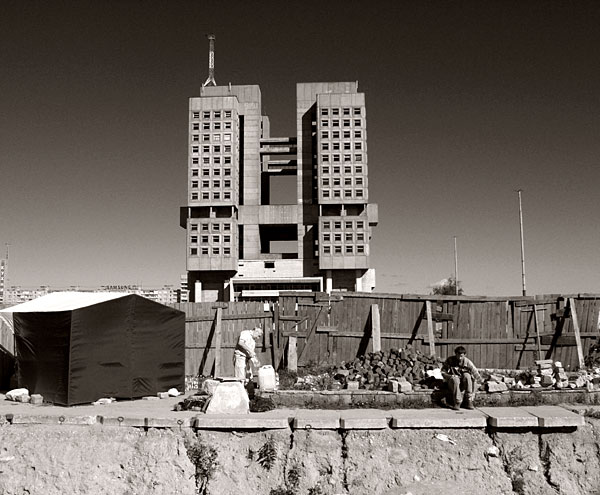
The design belonged to Yulian L. Shvartsbreim, an architect from Kiev whose work was cherished and respected in Soviet Russia. Construction commenced that same year, on top of the filled-in former moat of Königsberg Castle.
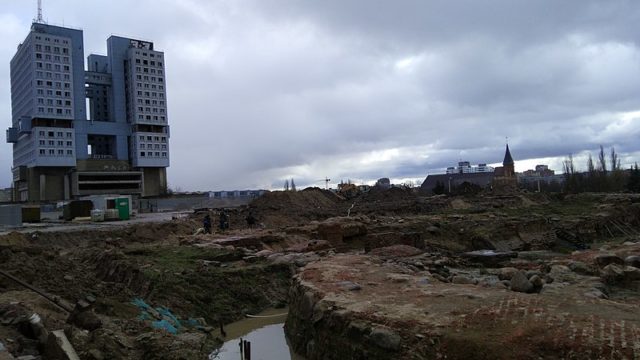
The original design called for 28 stories, but the land proved to be too marshy to be able to hold so much weight and only 21 stories were completed.
The original plan of the “House of Soviets,” as it came to be known, stated that the building should be finished with stemalite (enameled glass) but that plan was also changed and concrete panels were used instead.
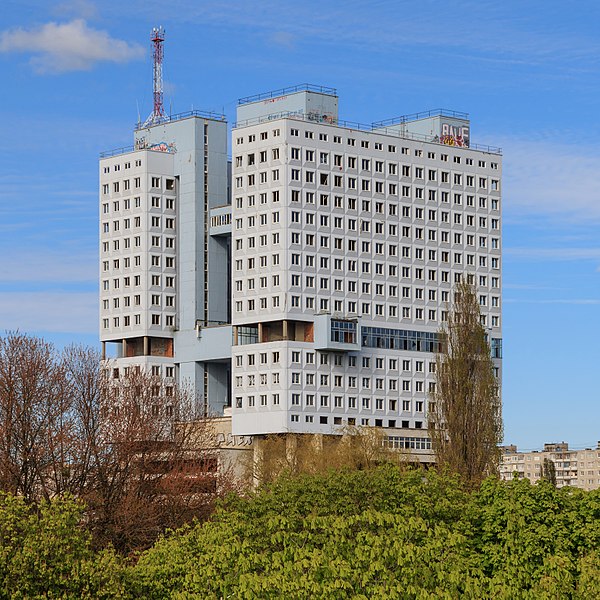
In 1985 the construction work was placed on hold, partly due to the subsidence problems, partly because the Party Committee lost its financial support and subsequently lost interest in the whole project. Since then the building has remained abandoned and unfinished. There was an attempt to complete the project in 1992 with the help of Danish investment, but even this plan was abandoned. The outer shell of the building towers some 235 feet into the air.
The Soviet Brutalism style of architecture is both loved and loathed. A number of Kaliningrad’s residents see this building is an eyesore, calling it the “buried robot,” however others see it as a beautiful example of this once-popular Modernist style.
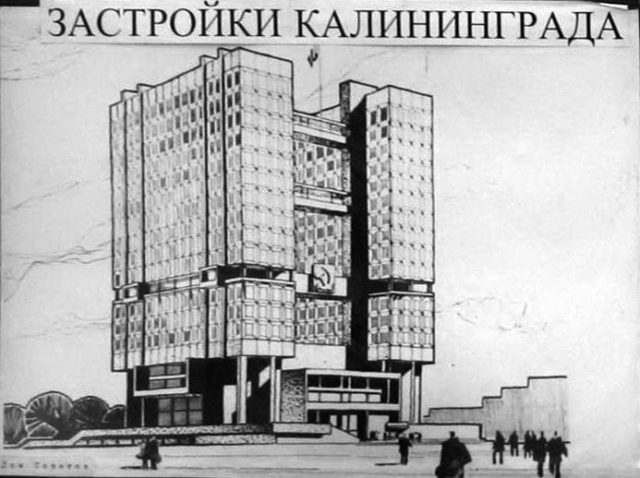
In 2005, during Kaliningrad’s 60th anniversary — or Königsberg’s 750th — that the House of Soviets was visited by President Vladimir Putin. In preparation for his visit, the exterior of the building was finally finished, receiving a fresh coat of paint in light blue and windows were installed. The interior remained unusable.
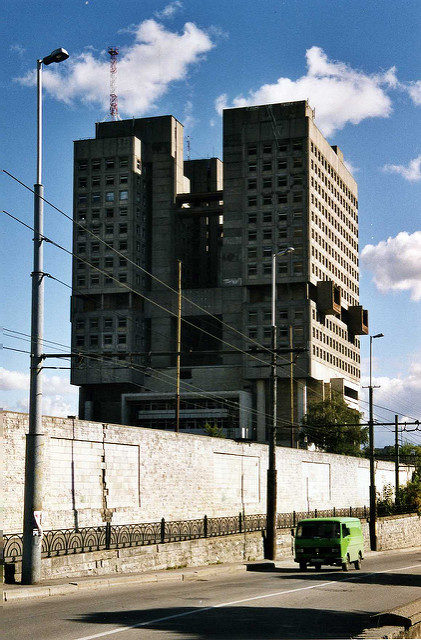
But even this new look was heavily criticized and the building was branded a Potemkin façade; the term “Potemkin village” is used in economics and politics when a bad situation is thinly disguised rather than solved. It derives from a story of how Prince Grigory Aleksandrovich Potëmkin-Tavricheski erected fake portable villages to impress Catherine the Great, Empress of Russia, when she came to visit the Ukraine in 1787.
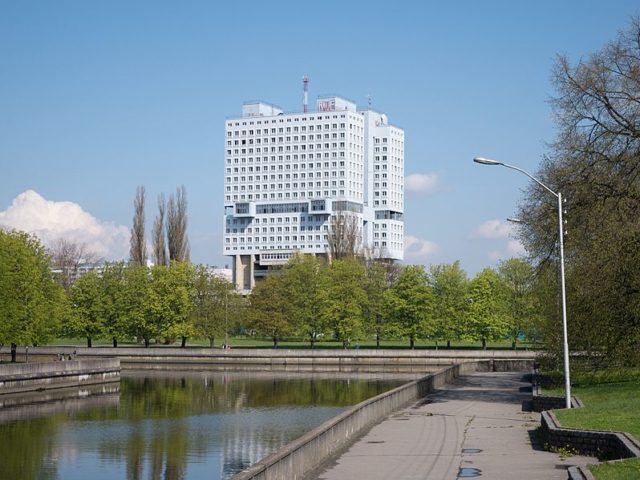
A proposal was made from a German consultant to demolish the whole structure, for rebuilding it entirely would be less expensive than revamping the existing building. To this very day, the building remains abandoned, waiting for a new plan to be developed.
